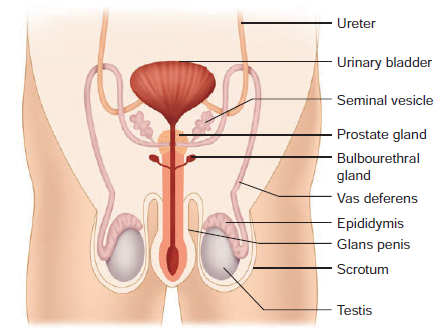Symmetry & Germinal Layers
Animal Diversity • Body PlansComplete analysis of body symmetry patterns and germ layer organization with phylogenetic significance and developmental biology
Core Concept:
Symmetry and germ layers define fundamental body plans that constrain evolutionary possibilities while tissue layers determine developmental potential of organs and systems.
Symmetry Types
Asymmetry → Radial → Bilateral
Germ Layers
Diploblastic → Triploblastic
I. Body Symmetry Patterns
A. Classification of Symmetry
Asymmetrical
- Definition: No plane of symmetry
- Examples:
- Porifera (Sponges)
- Ameboid protozoans
- Significance: Primitive condition
Radial Symmetry
- Definition: Multiple planes through central axis
- Subtypes:
- Biradial: 2 planes (Ctenophora)
- Pentamerous: 5 planes (Echinoderms)
- Examples: Cnidaria, Ctenophora, Echinoderm adults
Bilateral Symmetry
- Definition: Single sagittal plane
- Features:
- Cephalization
- Anterior-Posterior axis
- Dorsal-Ventral differentiation
- Examples: Platyhelminthes to Chordata
B. Evolutionary Transitions
Primitive → Derived States:
- Sponges: Asymmetrical (irregular growth)
- Cnidarians: Radial (sessile/pelagic)
- Flatworms: Bilateral (directional movement)
- Echinoderms: Secondary radial (larval bilateral)
Functional Adaptations:
- Radial: Advantage for sessile/pelagic organisms
- Bilateral: Enables cephalization and directional movement
- Biradial: Intermediate form in comb jellies
II. Germinal Layer Organization
A. Diploblastic Organization
Structural Composition:
- Ectoderm: Outer layer (protection, sensation)
- Endoderm: Inner layer (digestion)
- Mesoglea: Non-living gelatinous matrix
Phylum Characteristics:
- Cnidaria:
- True tissues but no organs
- Nerve net present
- Ctenophora:
- Mesoglea contains muscle cells
- More complex than cnidarians
B. Triploblastic Organization
Mesoderm Formation
- Enterocoely: Archenteron outpocketing (Deuterostomes)
- Schizocoely: Solid mesodermal bands (Protostomes)
- Exceptions: Acoelomates lack true coelom
Developmental Derivatives
- Ectoderm: Epidermis, CNS, neural crest
- Mesoderm: Muscles, bones, circulatory system
- Endoderm: Gut lining, respiratory tract
Evolutionary Significance
- Enabled complex organ systems
- Body cavity (coelom) development
- Increased body size potential
- Musculoskeletal innovations
C. Comparative Embryology
| Feature | Diploblastic | Triploblastic Acoelomate | Triploblastic Coelomate |
|---|---|---|---|
| Germ Layers | 2 (Ecto+Endo) | 3 (Mesoderm solid) | 3 (Mesoderm forms coelom) |
| Body Cavity | None (Mesoglea) | Pseudocoel (if present) | True coelom |
| Organ Systems | Absent | Primitive | Well-developed |
| Examples | Hydra, Jellyfish | Planaria, Liver fluke | Earthworm, Humans |
III. Developmental Perspectives
A. Gastrulation Patterns
Protostomes vs Deuterostomes
- Blastopore Fate:
- Protostomes: Mouth forms first
- Deuterostomes: Anus forms first
- Cleavage Pattern:
- Spiral & determinate (Protostomes)
- Radial & indeterminate (Deuterostomes)
- Coelom Formation:
- Schizocoely (Protostomes)
- Enterocoely (Deuterostomes)
Neural Crest Evolution
- Unique to chordates (“4th germ layer”)
- Gives rise to:
- Peripheral nervous system
- Pigment cells
- Cartilage/bones of skull
- Key innovation in vertebrate evolution
B. Evolutionary Developmental Biology (Evo-Devo)
Hox Genes & Body Plans
- Regulate anterior-posterior axis
- Gene duplication events enabled complexity
- Colinearity principle (order on chromosome = body expression)
Symmetry Breaking Mechanisms
- Nodal signaling in left-right asymmetry
- Cytoskeletal rearrangements
- Maternal effect genes establish initial polarity
Competitive Exam Toolkit
High-Value Facts:
- Exception: Echinoderm adults are radially symmetrical but larvae are bilateral (evidence of evolution)
- Unique Case: Ctenophores show biradial symmetry with comb plates in octamerous arrangement
- Boundary Organism: Trichoplax (Placozoa) has only 4 cell types but shows dorsal-ventral differentiation
- Human Clinical: Situs inversus results from symmetry-breaking defects (Kartagener syndrome)
- Evolutionary Insight: Mesoderm first appeared in flatworms enabling muscle specialization
Exam-Focused Questions:
- “How does germ layer organization correlate with phylogenetic advancement? Illustrate with examples from Cnidaria to Mammalia” (15 marks)
- “Compare the developmental consequences of diploblastic vs triploblastic organization. Why is mesoderm considered an evolutionary milestone?” (10 marks)
- “Analyze the statement: ‘Radial symmetry is both primitive and advanced’. Support your answer with zoological examples” (8 marks)
- “Describe the molecular mechanisms establishing bilateral symmetry in Drosophila and vertebrates” (12 marks)
- “Differentiate between schizocoelous and enterocoelous coelom formation with labeled diagrams” (7 marks)

